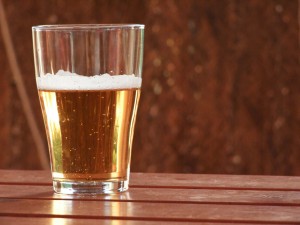
The post-recession years have been challenging for the UK beer market, with sales dropping by over 500 million litres between 2009 and 2013 alone. However after five consecutive years of decline, new findings from market research Mintel has found that overall volume sales of beer rebounded in 2014, increasing by 1.3 per cent to an estimated 4.24 billion litres in 2014.
Mintel’s research also showed that it was the UK’s love of lager that continues to drive the market, with volume sales of the beverage rising by an estimated 1.7 per cent in 2014, up to a predicted 3.17 billion litres.While ale sales have also been ascending, up from 885 million litres in 2013 to an estimated 891 million litres in 2014, stout sales continue to slide, and are predicted to fall to 183 million litres in 2014.
“Pressures on household finances, health concerns and competition from other markets have led to significant volume sales decline over the past five years for the beer market,” said Chris Wisson, Senior Drinks Analyst at Mintel.
“However, 2014 has seen volume sales finally bounce back into growth, buoyed by a warm summer and the football World Cup,” Mr Wisson said. “Whilst much of the market’s recent value growth has been driven by inflation and the now-defunct beer tax escalator, successive 1p cuts on the tax on pints and the slowdown in the cider market bode well for beer’s improving fortunes,” he said.
Consumers’ beer variety preferences
When it comes to beer preferences, over half (54 per cent) of UK consumers drank lager in the six months to September 2014, whilst a quarter (26 per cent) opted for ale and one in five (21 per cent) drank bitter. Moreover, one in five Brits (20 per cent) have drunk craft beer in the past six months, rising to almost a third (31 per cent) of 25-34s and 24 per cent of 18-24s.
Craft beer driving ‘premiumisation’
According to Mintel, craft beer still seemed to be driving premiumisation in the category as a third (34 per cent) of beer drinkers said they would be prepared to pay more for craft beers, rising to 43 per cent among 25-34s.
However, Mintel’s research also shows that over a third (36 per cent) were unsure what the term ‘craft beer’ actually means. It does however seem that there is scope for education, as 31 per cent said they would like to understand more about beer, for instance how to serve it and the ingredients which are used.
“Whilst craft beer is often defined on grounds of volume production, the segment has instead come to encapsulate an ethos and benchmark for producing high-quality or different types of beers,” Mr Wisson said. “Rather than just stating that they are a craft beer, brewers should clearly state how they justify this positioning, for example via their small production batches or use of unique or interesting ingredients,” he said.
Cider sales fall
However, while 2014 might have seen a hop in the beer sector’s step, sales of cider were less fruitful.
Volume sales of cider fell surprisingly by 0.8 per cent to 949 million litres in 2014, down from 957 million litres in 2013. Further to this, value sales grew by just 1 per cent in 2014, rising to £3.05 billion.
This is in stark contrast to the robust growth the category has experienced in previous years, with value sales rising by 10 per cent in 2012 and 6 per cent in 2013.
Mintel’s research shows that 57 per cent of UK consumers drank cider in the 12 months to October 2014, with more than two in five (44 per cent) drinking apple, 31 per cent pear, and 29 per cent fruit-flavoured cider. The craft segment is considerably less developed in cider than it is in beer, but 14 per cent of UK consumers still reported to have drunk a craft cider within the last year.
“Despite the significant recent growth of the cider category, volume sales are surprisingly estimated to dip slightly in 2014,” Mr Wisson said. “Some of cider’s momentum appears to have been lost to a rejuvenated beer category, which is seeing strong growth from various segments such as craft and world/global beers,” he said.
Fruit-flavoured cider on the rise
Furthermore, whilst retail value sales of apple cider dipped by 1 per cent in 2014, pear is estimated to have plummeted by 29 per cent. In contrast, fruit-flavoured ciders have soared, rising by just over a third in value.
“Fruit-flavoured cider benefits from being seen as a fashionable and innovative segment of the market, two attributes which have been key in driving growth by appealing to Millennials in particular,” Mr Wisson said.
Australian beer and cider trends
In Australia, the alcoholic apple cider market has been on the up and up, with Australian Food News reporting in June 2014 that cider sales were looking set to overtake alcopops. At the same time, consumption of alcohol in Australia continues to decline, with Australian Food News reporting in April 2014 that Australians were drinking less alcohol overall than at any time in the past 15 years.
Craft beer has enjoyed increasing popularity in Australia, even as local mainstream beers have experienced a downward trend. Australian Food News reported in August 2014 that, for the first time on record, the number of Australian adults consuming craft beer in an average four-week period has increased to more than one million.





